Year 8 Solving Equations Worksheets
Find the Values
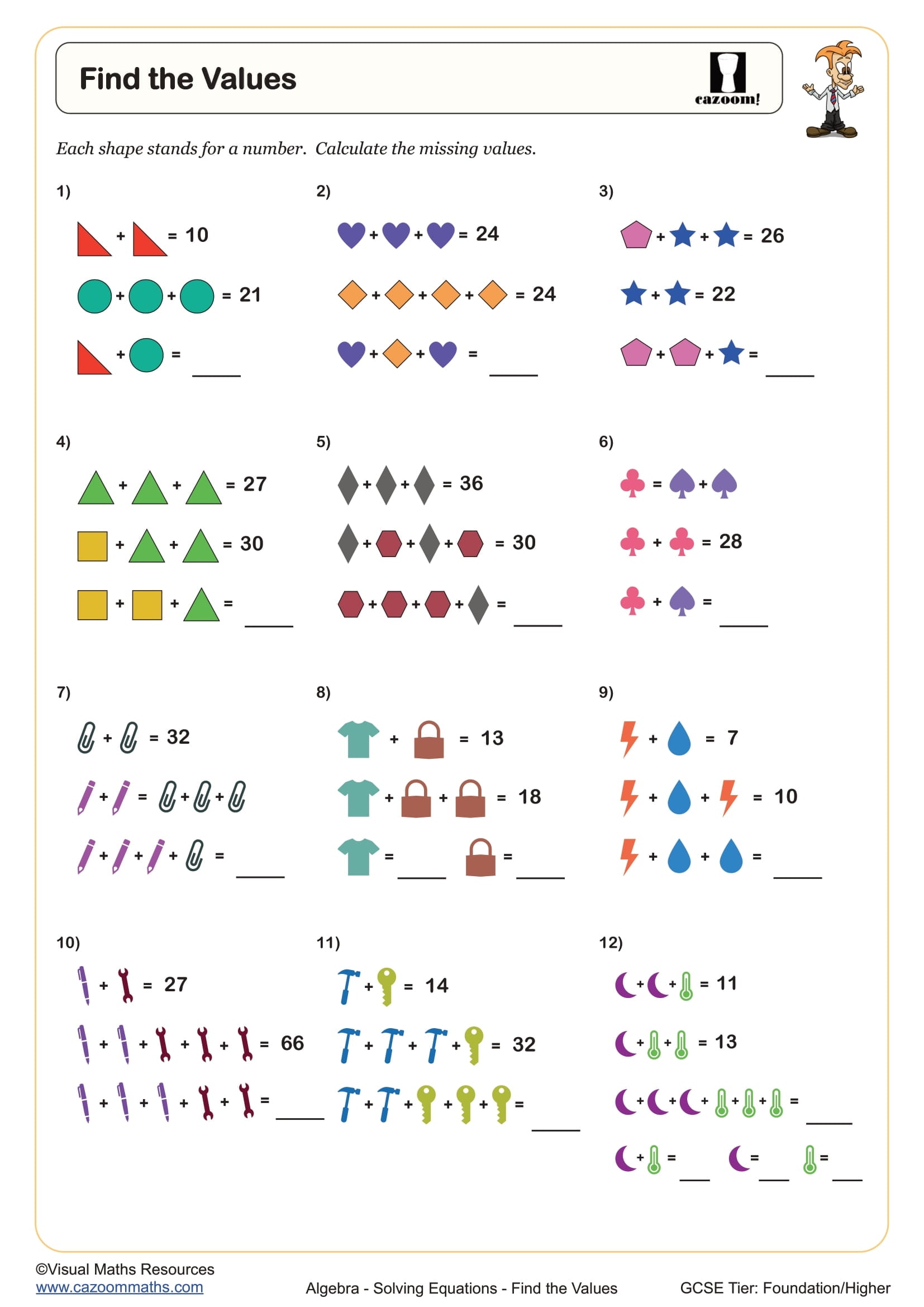
Forming and Solving Equations
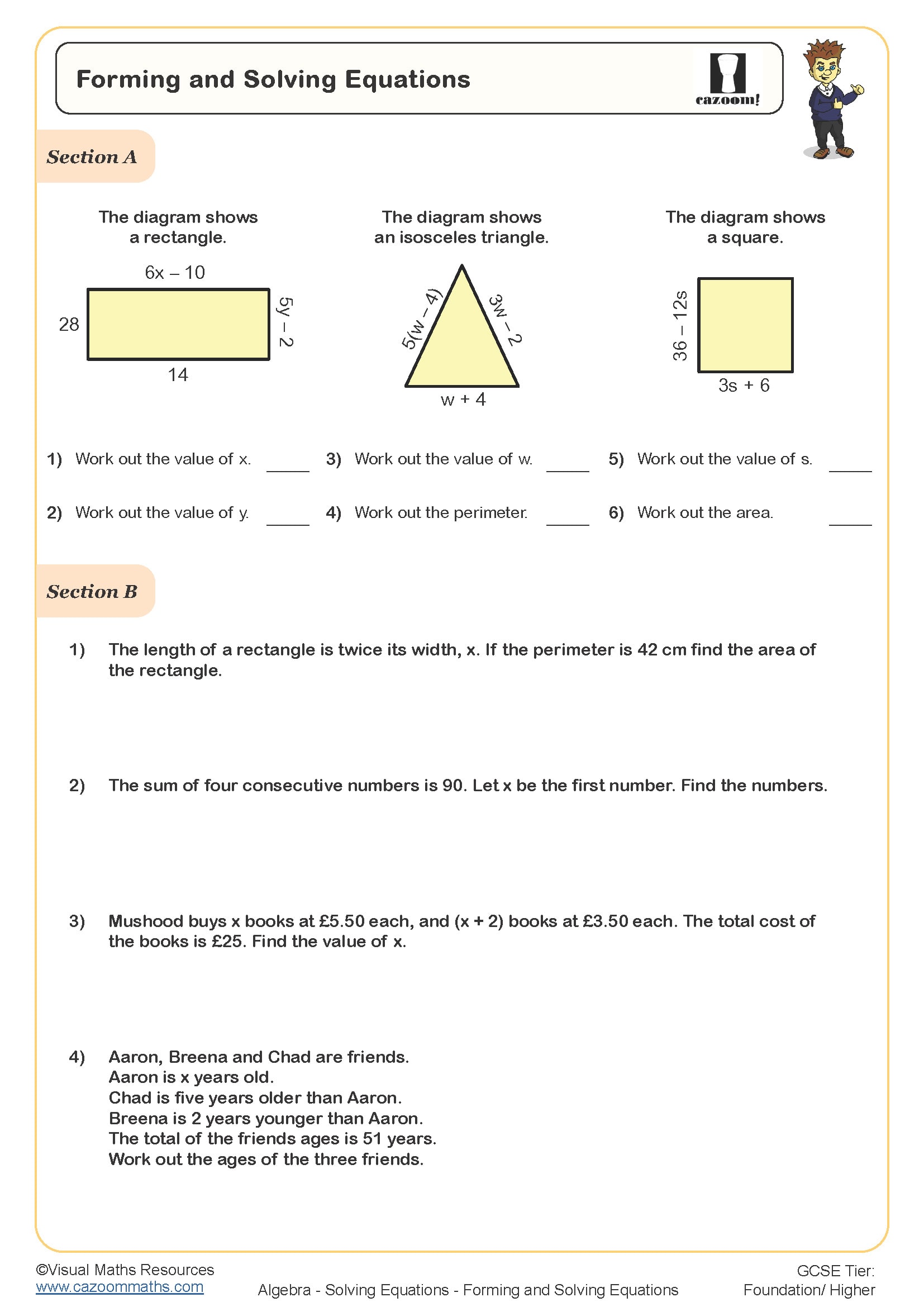
Forming and Solving Equations Involving Angles (A)
-Worksheet.jpg)
Forming and Solving Equations Involving Angles (B)
-Worksheet.jpg?w=3840)
Forming and Solving Linear Equations: a𝑥 = b and 𝑥/a = b
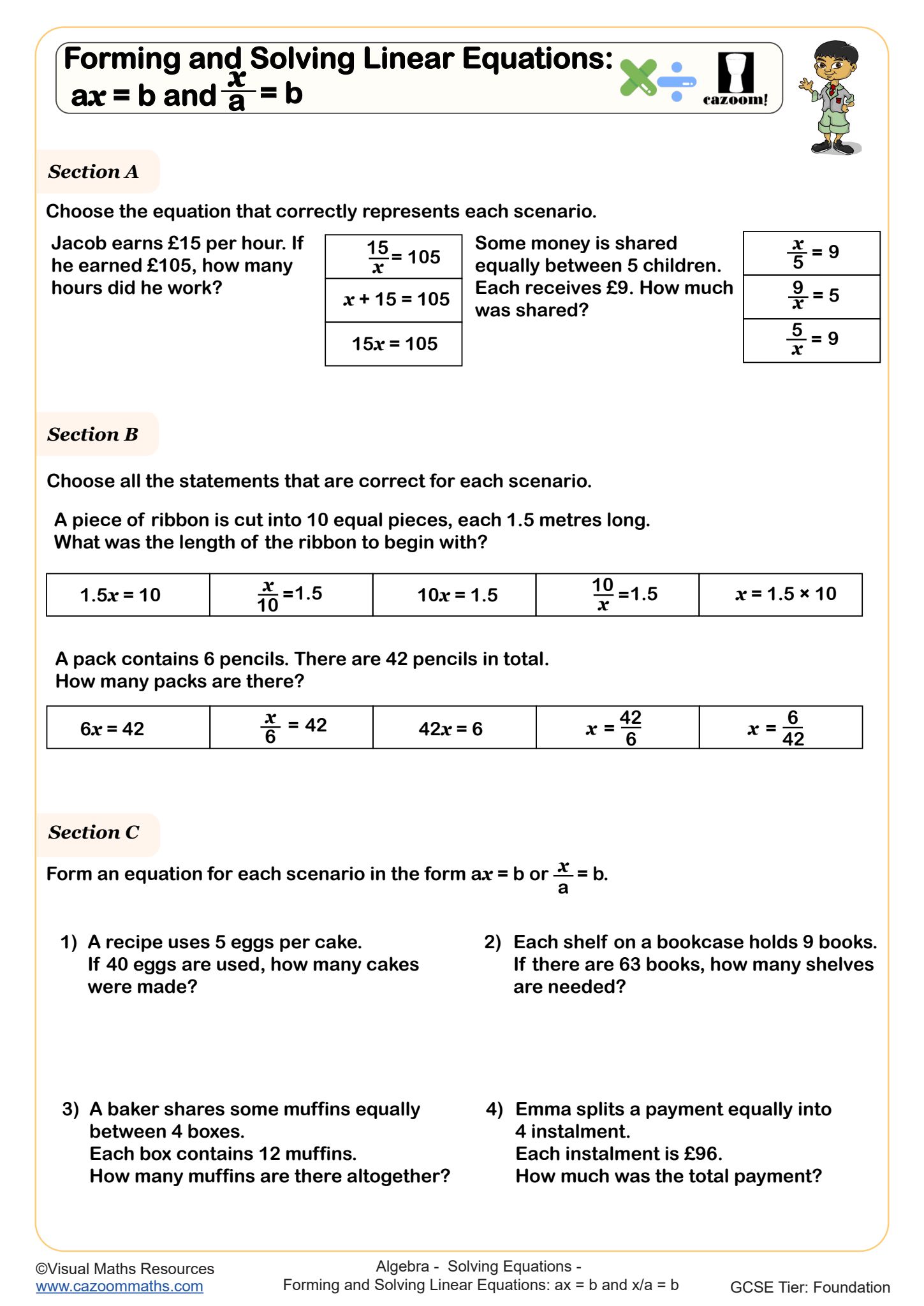
Forming and Solving Linear Equations: x + a = b and x - a = b
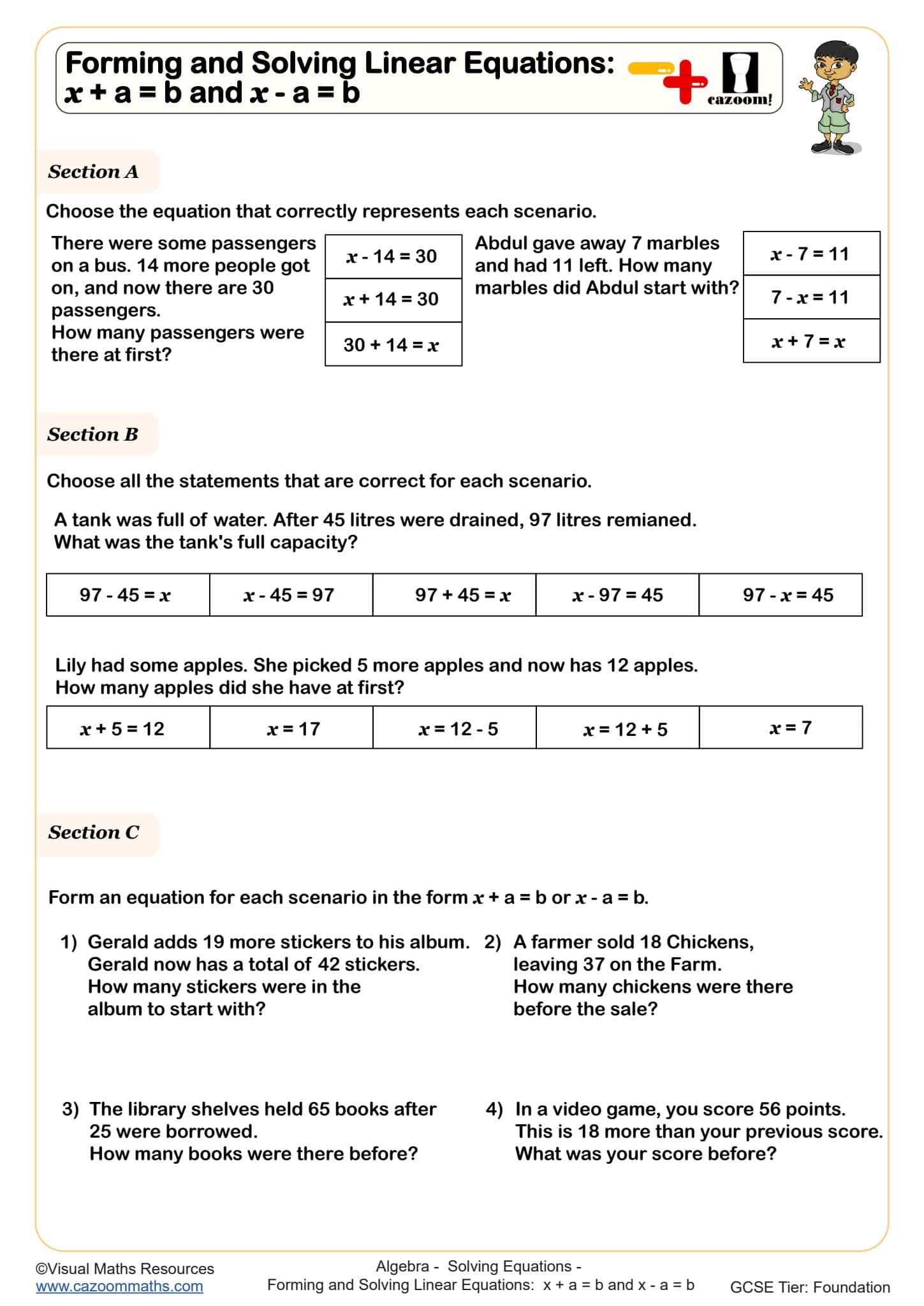
I Think of A Number Problems
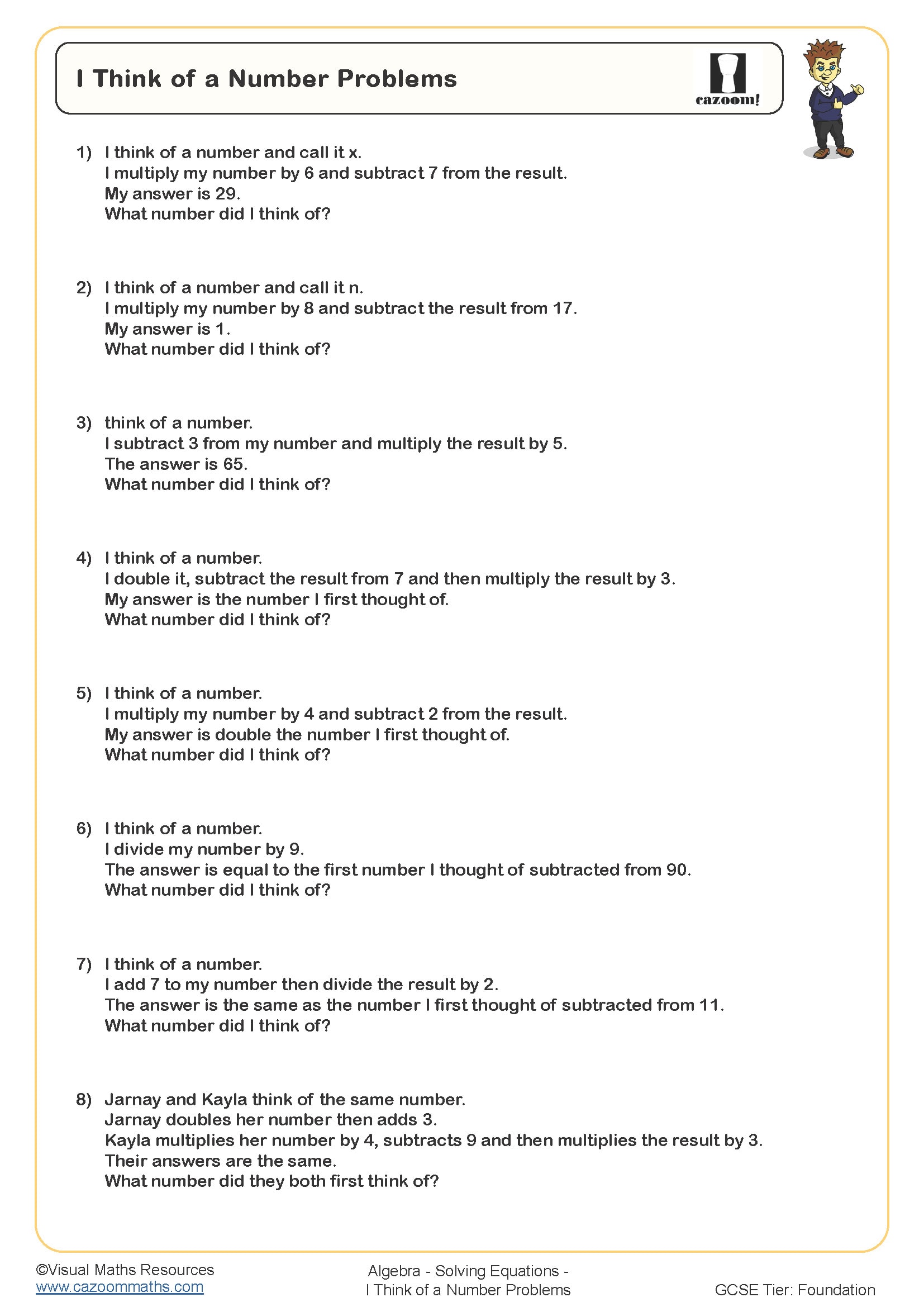
Manipulating Equations

Solving Equations - Unknowns on Both Sides

Solving Equations 15 Minute Challenge (B)
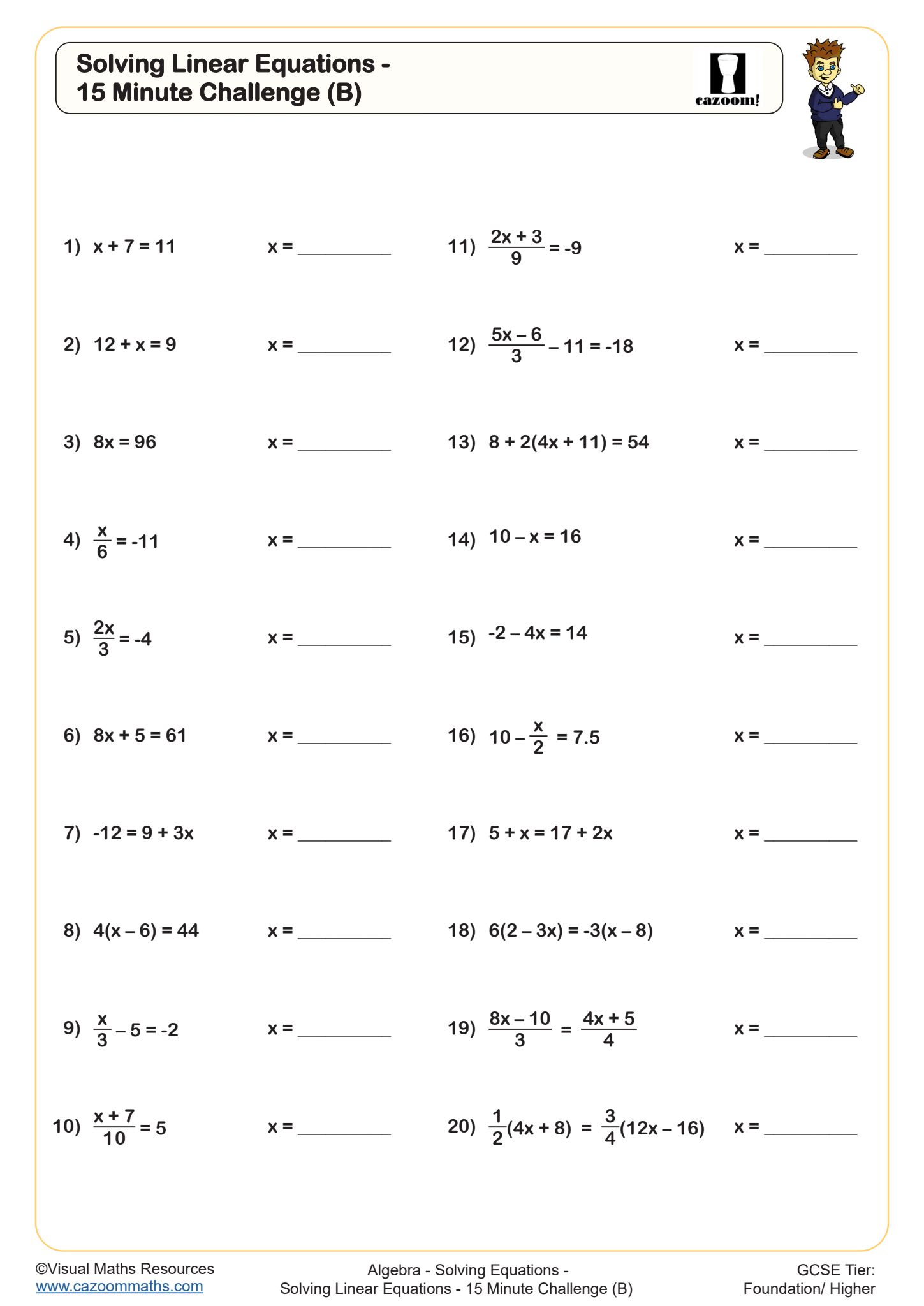
Solving Equations Involving Area of Rectangles
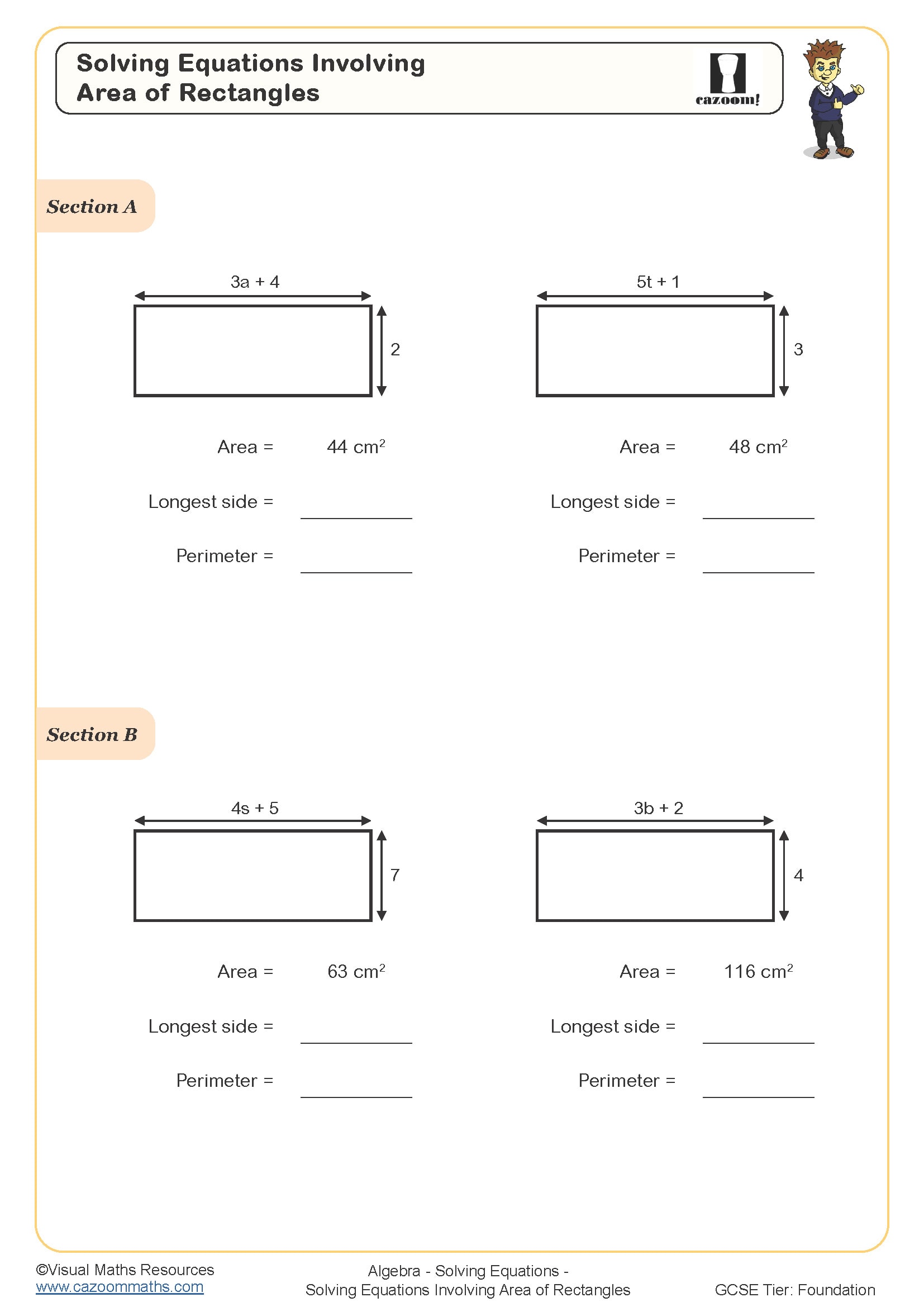
Solving Equations Involving Brackets

Solving Equations Involving Fractions

Solving Equations with Algebraic Perimeters
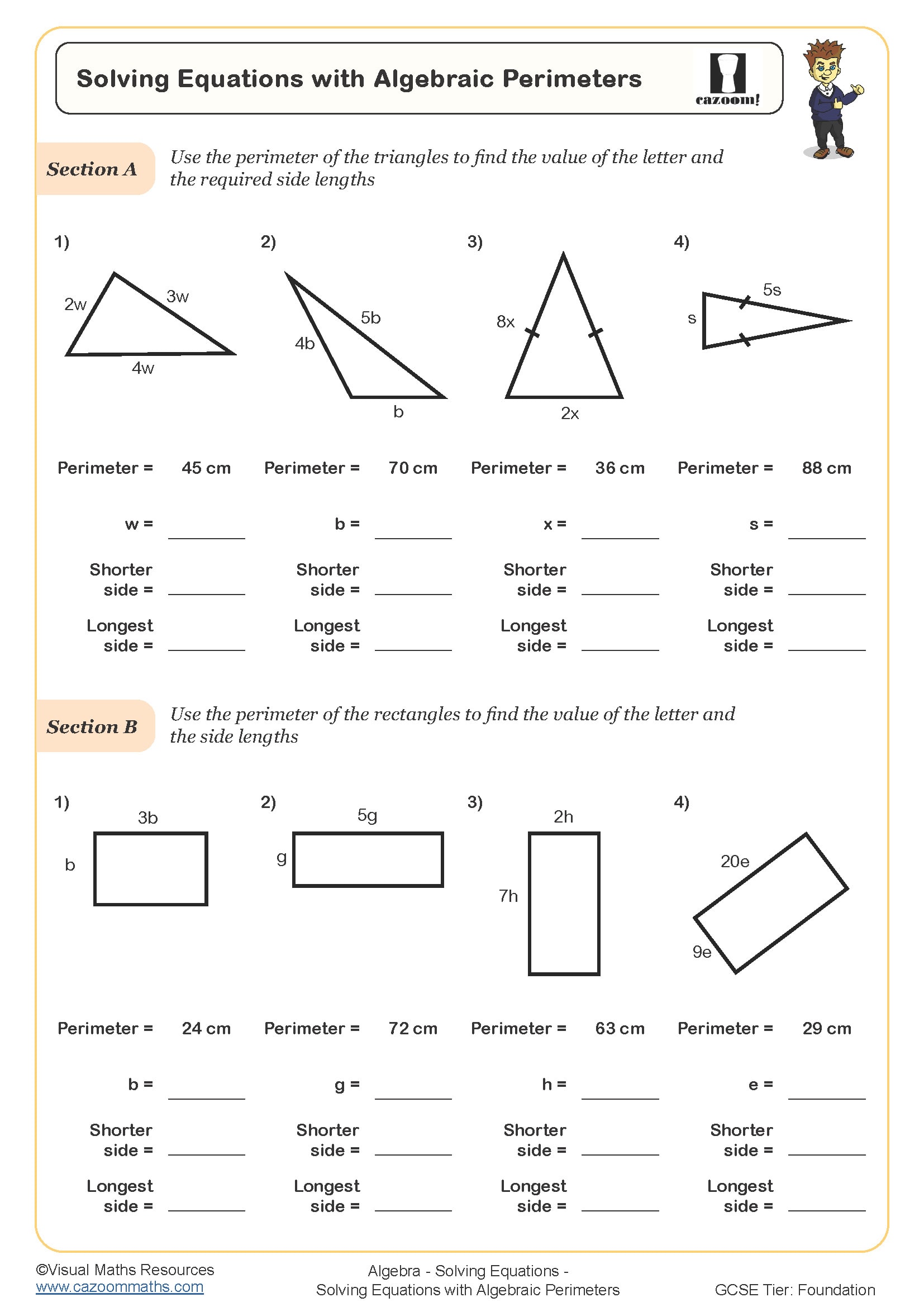
Solving Equations with Unknowns on Both Sides - Using Algebra Tiles
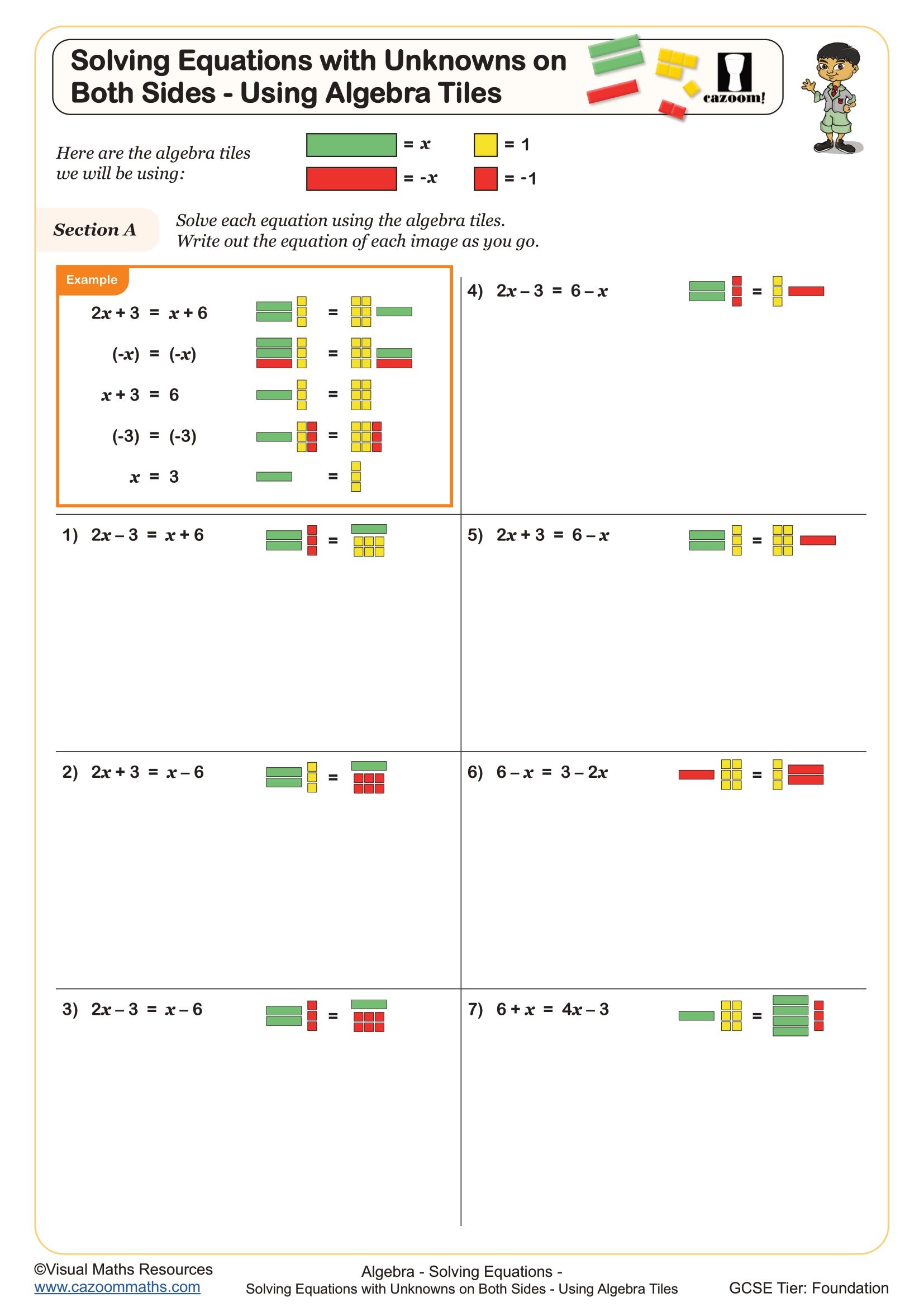
Solving Linear Equations (A)
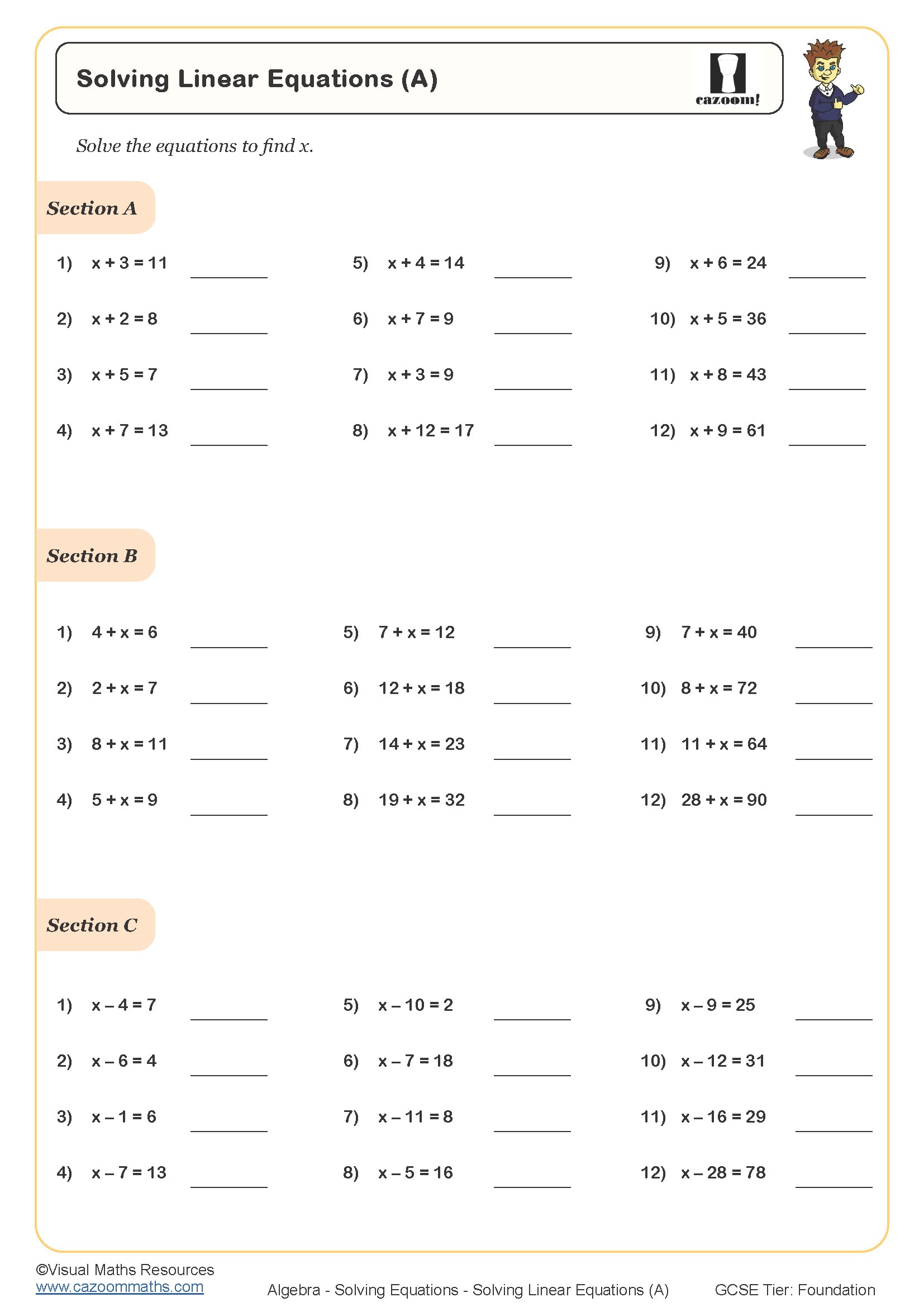
Solving Linear Equations (B)
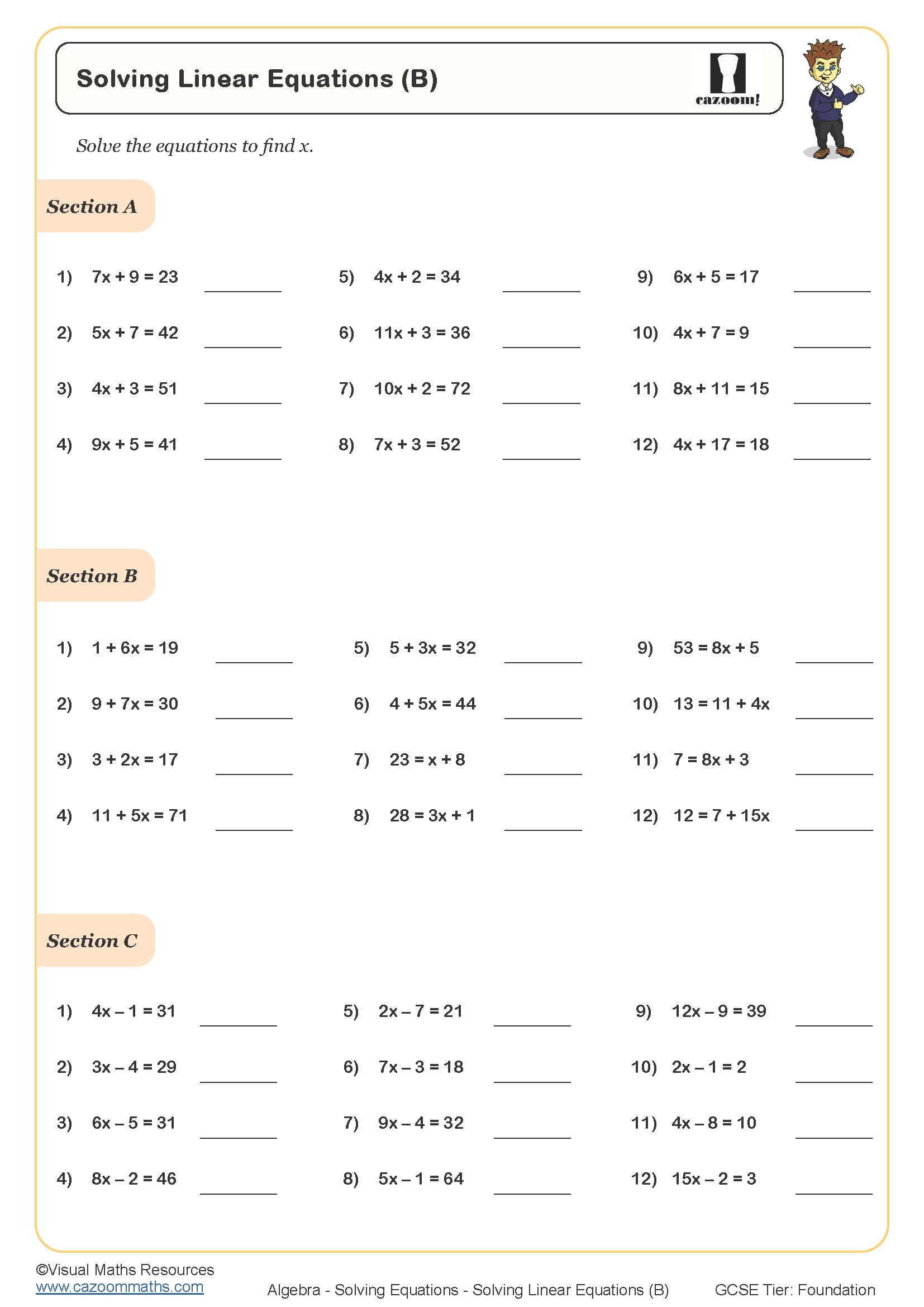
Solving Linear Equations (C)
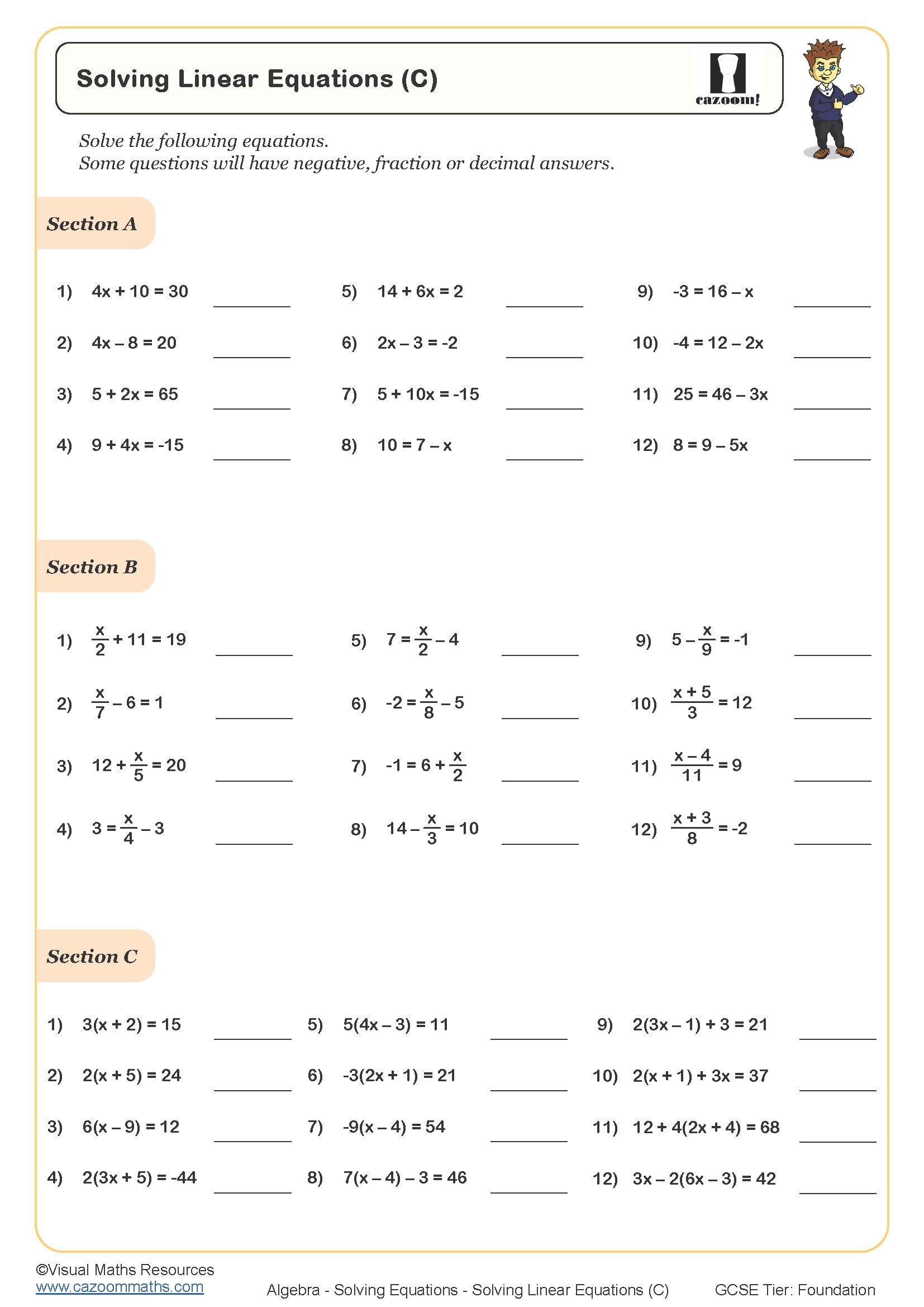
Solving One Step Equations with Algebra Tiles

Solving Two Step Equations with Algebra Tiles
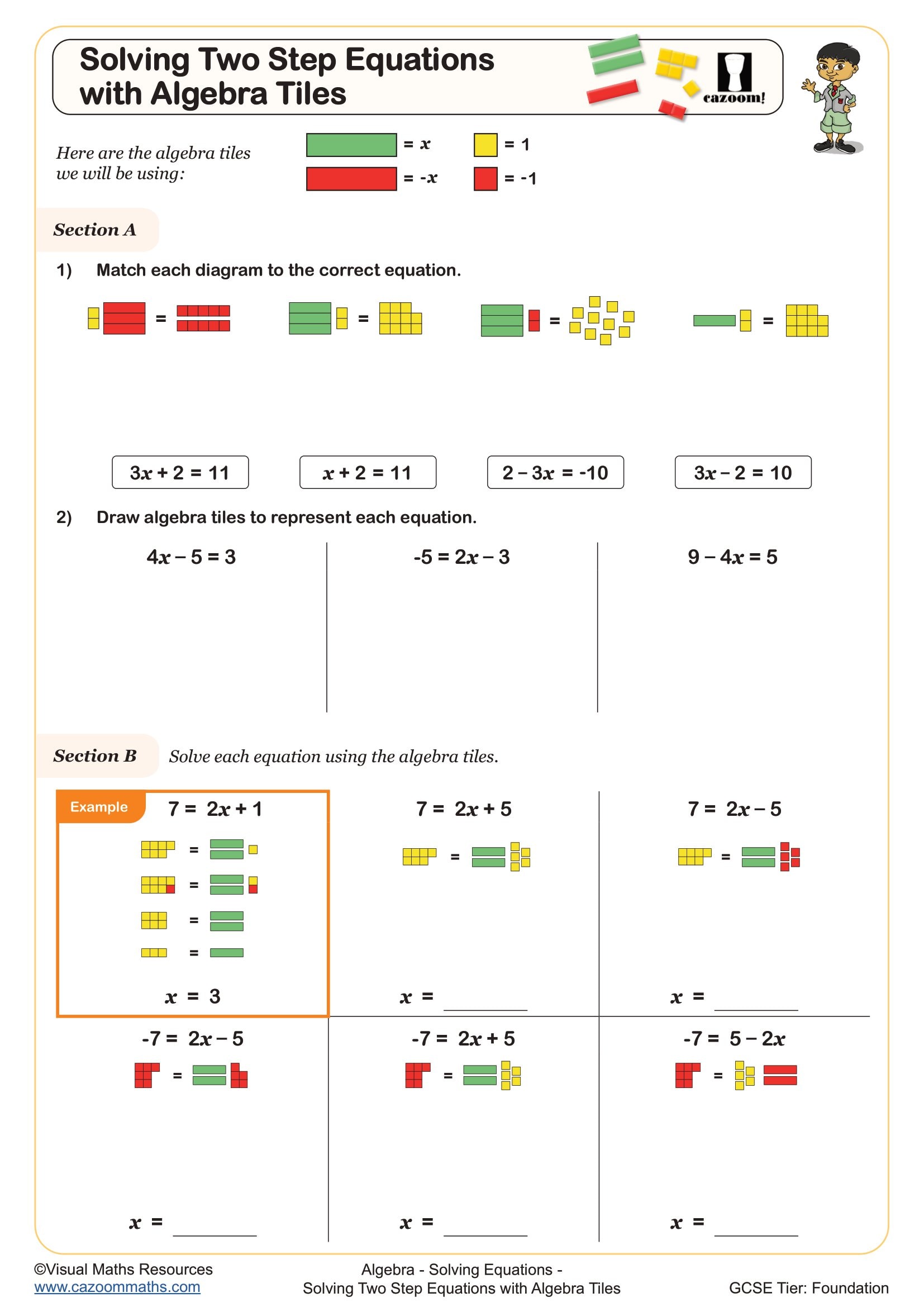
Trial and Improvement (A)
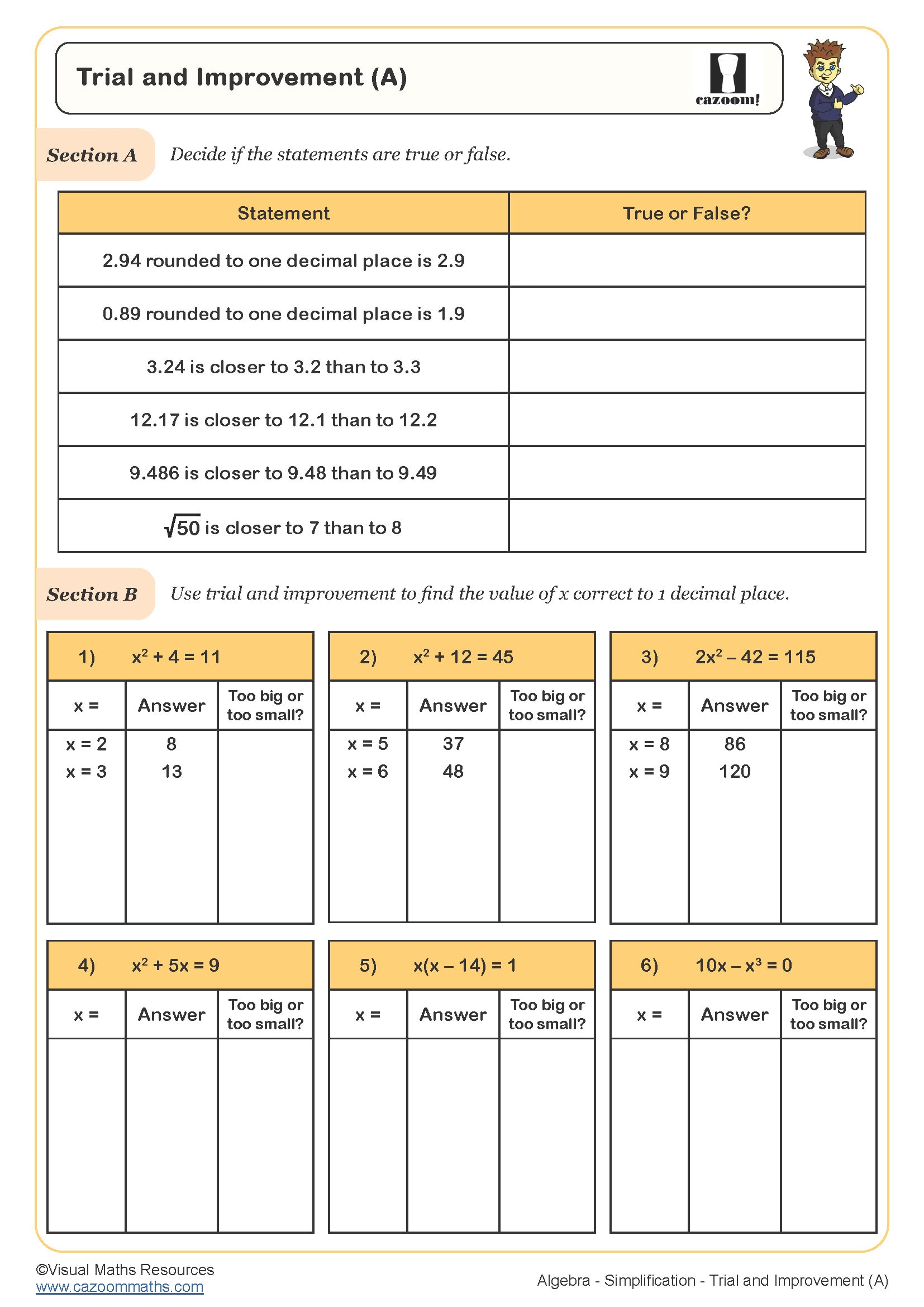
Trial and Improvement (B)
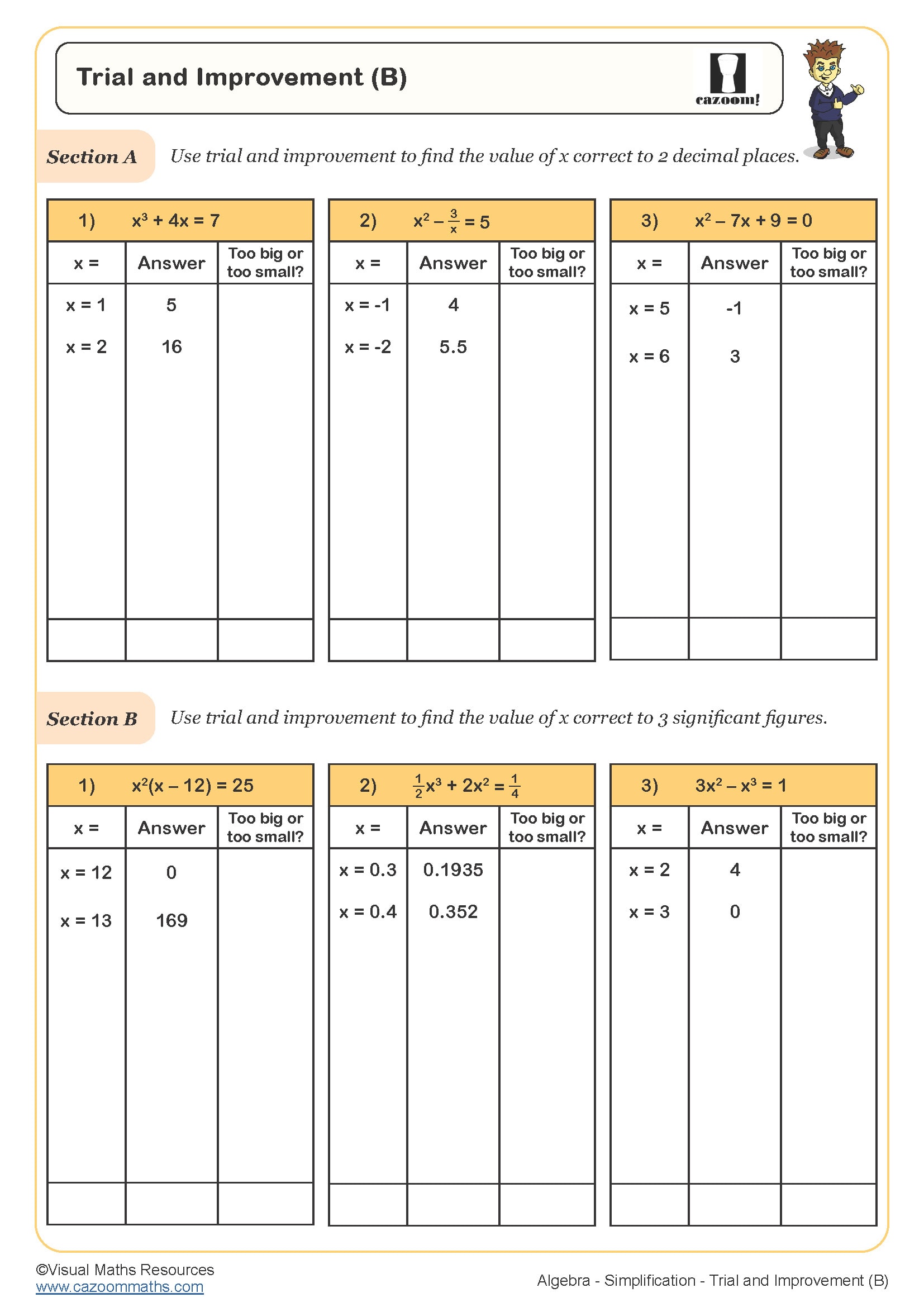
How Year 8 Solving Equations Worksheets Build Step-by-Step Mastery
Progress comes from a repeatable routine: recognise structure, apply the correct inverse operations, and verify the solution. These worksheets apply that routine to unknowns on both sides, brackets, and fractional coefficients without bloating the workload. Brief prompts encourage justifications, quick checks by substitution, and spotting common slips with signs and equivalence. Specific learning benefits include:
• Fluent inverse operations in one- and two-step equations
• Secure handling of variables on both sides
• Confident in working with brackets and fractional terms
• Efficient checking by substitution and estimation
• Forming equations from words, diagrams, or geometry
• Clear, consistent algebraic notation
What the Year 8 Equations Set Covers, from Tiles to Notation
Learners begin with concrete and pictorial models to visualise balance, then move to symbolic manipulation. Tasks progress from one- and two-step equations to brackets, fractions, and variables on both sides. Worked answers model efficient layout and checking so pupils can compare their approach with an exemplar.
The worksheets in this collection include:
• One-Step Foundations — Build the core balance method with simple one-step equations and supportive visuals.
• Two-Step & Multi-Step Linear — Chain inverse operations over several moves with tidy, line-by-line working.
• Unknowns on Both Sides — Collect like terms and keep balance when variables appear on each side.
• Brackets & Fractions — Expand or clear denominators before isolating the variable.
• Forming Equations from Contexts — Turn words, shapes, and measures into equations, then solve.
• Substitution & Evaluation — Substitute values to check or determine unknowns quickly.
• Simultaneous Equations — Use elimination strategies, including like-coefficient shortcuts.
• Mixed Retrieval & Numerical Methods — Blend question types and use trial and improvement where appropriate.
Why Teachers Choose Our Year 8 Solving Equations Resources
Pages are classroom-ready: quick to start, simple to model, and straightforward to mark. Early items check core moves; later ones ask for explanations, corrections, or equation-forming from context. One sheet supports mixed-attainment groups through depth rather than different versions. Print-friendly layouts save time, and the answer sheets display both the method and the result, allowing for accurate self-assessment and consistent feedback.
Where Equation-Solving Helps Beyond Maths
Algebraic thinking streamlines everyday decisions and technical work.
• Comparing tariffs by solving for break-even points
• Rearranging speed–distance–time to plan journeys
• Budgeting with spreadsheet formulas allows you to check and adapt.
• Scaling recipes or materials via simple multiplicative equations
• Isolating a variable in science relations (e.g., F=ma)
• Checking dimensions in design using perimeter or area equations
• Coding constraints where a variable must meet a set condition